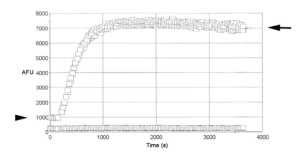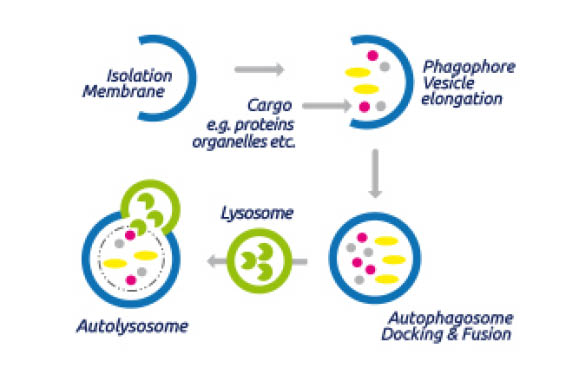
Actin dynamics – i.e. polymerization of G-actin to form filamentous F-actin or de-polymerization of F-actin – is a fundamental process in cell biology, as it is the basis of cell movement (e.g. cell migration) and intracellular movements and transport mechanisms. Globular-actin (G-actin) readily polymerizes under physiological conditions to form filamentous actin (F-actin) with the concomitant hydrolysis of ATP. F-actin is a double-helical filament (Fig. 1). Actin can polymerize from both ends in vitro. However, the rate of polymerization is not equal. This results in an intrinsic polarity in the actin filament. It has therefore become the convention to term the rapidly polymerizing end the plus-end or barbed-end (+) while the slow growing end is called the minus-end or pointed-end (-).
In this post, I’d like to concentrate on a method to measure polymerization of actin in biochemical assays. It’s the third post in a series of actin related publications which started with Focus on Actin staining and visualization and Focus on Actin – Detection of actin binding and actin binding proteins. In an upcoming blog I’ll be focussing on G-F actin ratio detection in cells.
Measuring actin polymerization


The method applied in the kit can be used:
- to show quantitative / qualitative effects on actin polymerization by the addition of a tissue extract, an actin binding protein, or compound.
- to show quantitative / qualitative effects on actin polymerization by addition of an F-actin nucleating protein, compound, or extract.
- to show quantitative / qualitative effects on steady-state F-actin levels by addition of an F-actin severing protein, compound, or tissue extract.
- to show quantitative / qualitative effects on actin depolymerization by addition of an actin binding protein, compound, or tissue extract.
- to determine the critical concentration of actin polymerization under various experimental conditions
If you are interested in this method, leave your comment or questions below!



